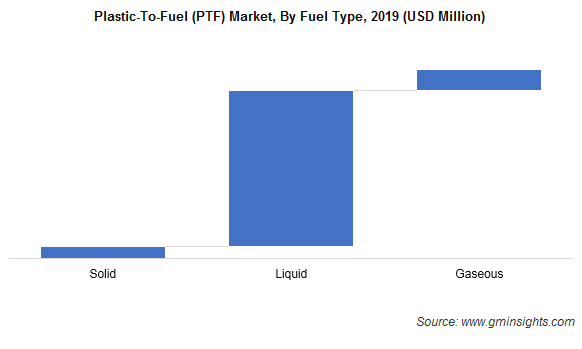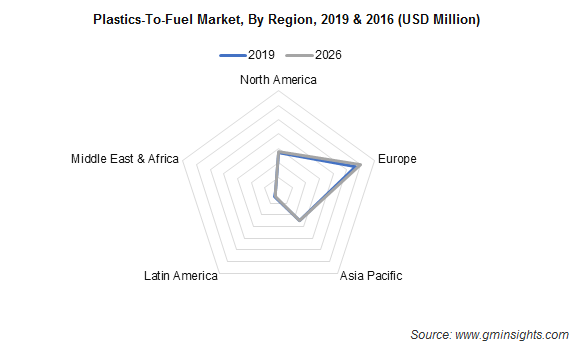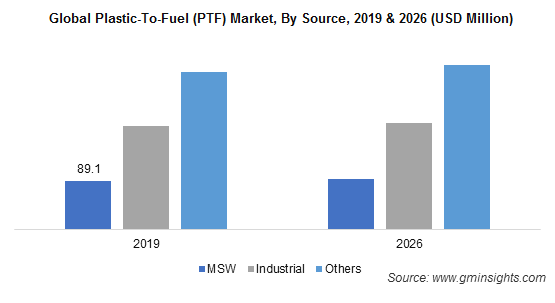Home > Chemicals & Materials > Specialty Chemicals > Custom Synthesis > Plastics-To-Fuel (PTF) Market
Plastics-To-Fuel (PTF) Market Analysis
- Report ID: GMI4804
- Published Date: Aug 2020
- Report Format: PDF
Plastics-To-Fuel Market Analysis
The plastics to fuel technologies are opportunistic and reflect positive outlook to plastic manufacturers. However, the current scenario of treating waste into fuel is not as profitable as that of conventional fuel making. The key challenge present in the market is economies of scale. Most manufacturers have observed that the feedstock quality largely affects the fuel quality.
Additionally, the waste collected from municipal areas are highly contaminated with food, organic, or other types of chemicals, that escalates the manufacturing costs. Also, the commercial viability of plastics-to-fuel is largely dependent on end-user requirements, selection of depolymerization technology, and type & quality of feedstocks. Such trends are likely to hamper the plastics-to-fuel market growth.
The ongoing coronavirus pandemic will adversely impact potential demand for the plastics-to-fuel market. In 2020, conventional fuel consumption dropped by 7% - 8% as compared to 2019, that is attributed to the shutdown or partial closure of major petrochemical plants & refineries. However, on the supply side, feedstock manufacturers may expect a high demand owing to the rising need for sanitary products globally.
In 2019, the Municipal Solid Waste (MSW) segment contributed to over USD 85 Million in the overall plastics-to-fuel market share. MSW segment will lead the industry size in Latin America and the Middle East & Africa owing to high amount of wastes generated from the household & municipal sectors. The availability of feedstock material and cost of obtaining plastic wastes will have a substantial impact on the consumption trends of municipal solid plastic wastes to fuel industry.
The thermal pyrolysis will witness over 2.5% CAGR from 2020 to 2026. Growing demand for liquid fuel in the end-user industry along with the cost-effectiveness of pyrolysis than other thermal degradation technology will enhance plastics-to-fuel market segment penetration. The process involves the thermal decomposition of plastics in the absence of oxygen. The process enables the reuse of the energy and raw materials of the waste that reduces the environmental impact of the incorrect disposal of waste.

Liquid fuel will account for over 80% share in plastic-to-fuel market by 2026. Pyrolysis converts around one ton of plastic waste to more than 100 gallons of fuel. However, the quantity of fuel generated depends upon a variety of things including contamination of feedstock, process selection, etc. Many oil producers are focusing on utilizing plastics-to-fuel due to growing concerns towards high-quality & sustainability among plastic producers, further increasing the popularity of liquid fuel in the industry.

The Europe plastics-to-fuel market is likely to account for over 45% share in the overall industry size. The share is attributed to presence of multiple plastic to fuel conversion facilities that offer high recycling and energy recovery rate from plastic wastes. The region also aims to reduce its GHG emissions by 40% from 1990 levels, promoting the growth of renewable & cleantech sectors.

